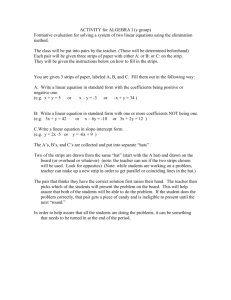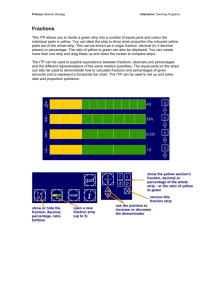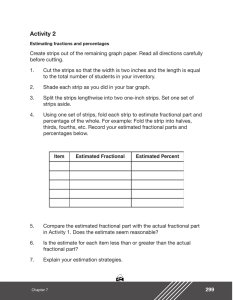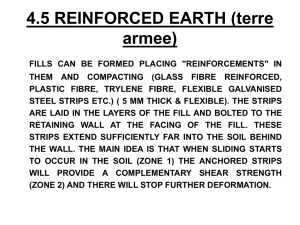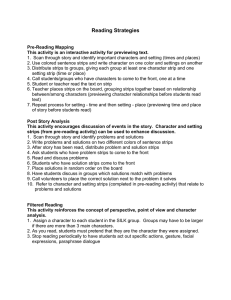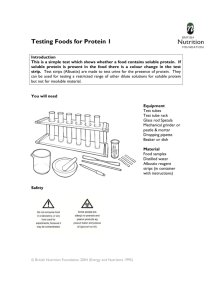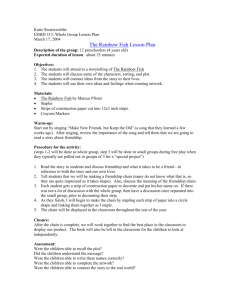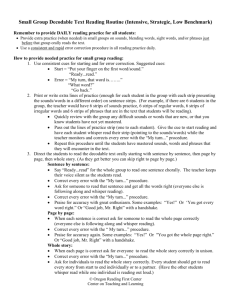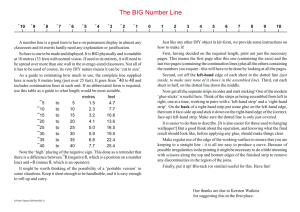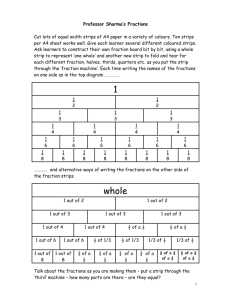Resistivity Lab - prettygoodphysics
advertisement
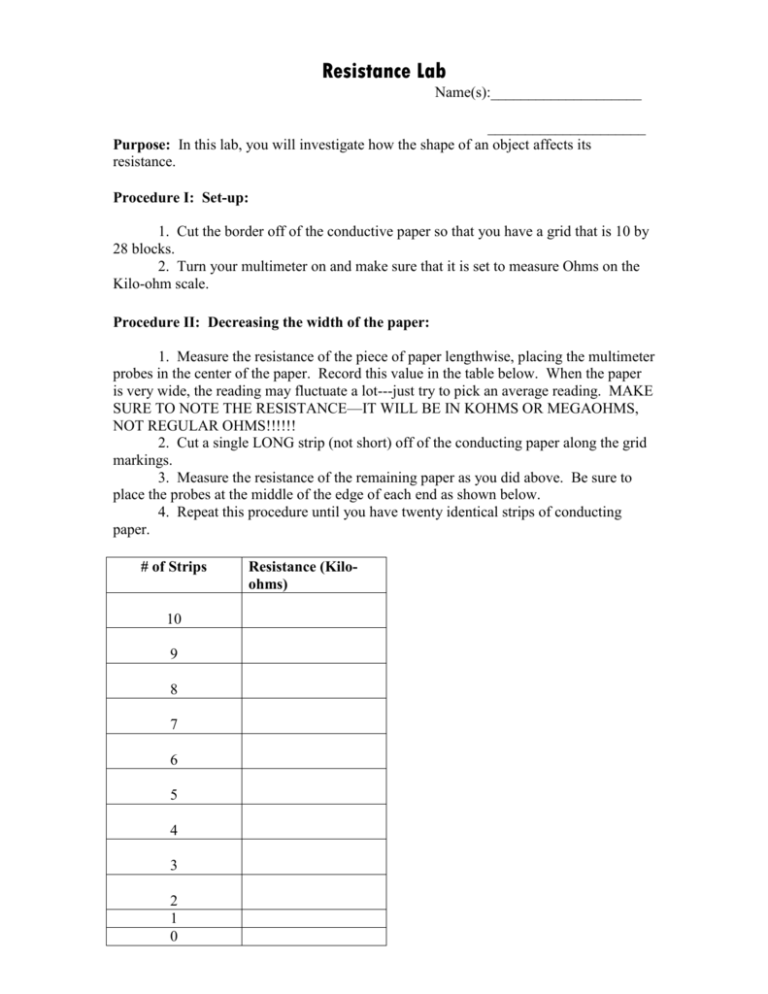
Resistance Lab Name(s):____________________ _____________________ Purpose: In this lab, you will investigate how the shape of an object affects its resistance. Procedure I: Set-up: 1. Cut the border off of the conductive paper so that you have a grid that is 10 by 28 blocks. 2. Turn your multimeter on and make sure that it is set to measure Ohms on the Kilo-ohm scale. Procedure II: Decreasing the width of the paper: 1. Measure the resistance of the piece of paper lengthwise, placing the multimeter probes in the center of the paper. Record this value in the table below. When the paper is very wide, the reading may fluctuate a lot---just try to pick an average reading. MAKE SURE TO NOTE THE RESISTANCE—IT WILL BE IN KOHMS OR MEGAOHMS, NOT REGULAR OHMS!!!!!! 2. Cut a single LONG strip (not short) off of the conducting paper along the grid markings. 3. Measure the resistance of the remaining paper as you did above. Be sure to place the probes at the middle of the edge of each end as shown below. 4. Repeat this procedure until you have twenty identical strips of conducting paper. # of Strips 10 9 8 7 6 5 4 3 2 1 0 Resistance (Kiloohms) Analysis: 1. How did the resistance of the paper change as you decreased its width? BE SPECIFIC HERE: (it increased slowly, then quickly; it decreased at a uniform rate; it did not change) 2. Explain why the removal of the last strip has a greater effect than the removal of the first strip. Hint—think of percentages. Be specific and accurate. Procedure II: Increasing the cross-section of the paper. 1. Measure the resistance of ONE of your 10 strips of paper. Record this value in the table on the next page. 2. Place a second strip directly on top of the first strip. Measure the resistance of the new arrangement and record this value in the table. 3. Repeat this procedure until you have a stack of 10 strips. # of Strips 0 1 2 3 4 5 6 7 8 9 10 Resistance (Kohms) Analysis: 1. What happened to the total resistance as the stack became taller? (Be specific: it increased at a uniform rate; it decreased quickly than slowly, etc.) 2. Compare your results for procedures II and III. Calculate the percent difference in the resistance for 3 strips stacked to 3 strips side by side. (use the first experiment as the accepted value) 3. Calculate the percent difference in the resistance for 5 stacked vs. 5 strips lengthwise. Based on your measurements, does it matter whether the surface area is wide but not tall or tall but not wide? Procedure IV: Decreasing the length of the conductor. 1. Take ONE STRIP and measure the resistance from end to end. Record this in the table below. 2. Cut off TWO of the 28 grids, and measure the resistance of the remaining strip. Record below. 3. Repeat this process, cutting off two strips each time until there are no grids left. Number of Grids 28 26 24 22 20 18 16 14 12 10 8 6 4 2 0 Resistance (Kohms) Analysis: 1. What happened to the resistance of the paper as you removed each pair of grids? (Be specific: (it increased at a uniform rate, it increased quickly, then slowly, etc.) GRAPHICAL ANALYSIS: 1. Make a graph for each data table. (three total). Don’t forget the point (0,0)!!!! Plot Resistance on the Y-axis and number of grids on the X-axis. 2. Use the Automatic Curve Fit menu to find a good functional fit to your data. 3. Print each graph, making sure that it included the function that matches the data. 4. Write on each graph how the variables are related: inverse relationship, direct relationship, parabolic relationship, sine wave, logorhythm, etc.

